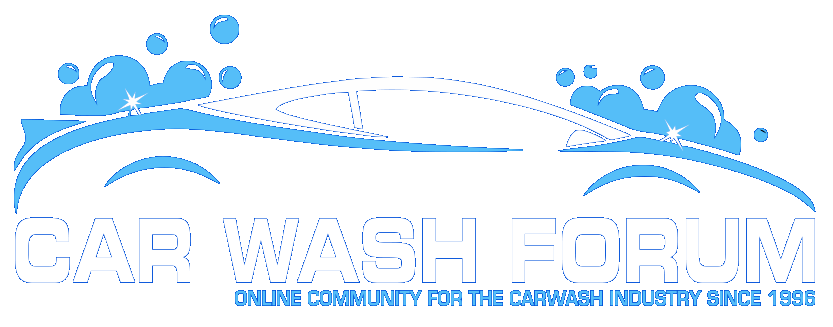robert roman
Bob Roman
Washregal,
Check out these articles from PC&D;
Case study: Ipswich Car Wash
From Volume 31, Issue 12 - December 2007
www.carwash.com
Ground Breaking (section)
From Volume 30, Issue 11 - November 2006
Ipswich, MA
Ken Oullette, owner of the new Ipswich Car Wash, hopes to turn rainwater into profit. The soon-to-open wash uses a system that collects rainwater in tanks to be used to wash cars and recharge the nearby wetlands.
The rainwater harvesting system, designed by engineer Larry Graham of Graham Associates, uses impervious surfaces to drain rainwater into 60,000-gallon tanks underneath the washing bays. The system, said to be the first in the U.S., cost in excess of $1.5 million and took two years to design and build.
The in-bay automatic carwash will use 50 to 60 gallons of water on each vehicle, only eight gallons of which will come from the town water supply. If there is period of low rainfall, Ouellette said there is a possibility he might have to rely on more town water.
If you do some additional research, you will find that there are other and less expensive ways to incorporate rainwater harvesting at a carwash operation.
1) Rooftop collection - relatively inexpensive to build and to filter and store the water but much less water will be collected.
2) Surface collection - this approach involves intercepting rainfall from the property's surface water runoff system. This is more expensive to build (storage tank, network, etc.) and filter (to remove debris and oil) but more water will be collected.
The water provided from a rooftop system could be used in a number of ways to supplement city water. A surface system would provide far greater volumes but it requires a systematic approach in the overall design of the carwash similar to the approach that one should use in designing a reclaim system.
Hope this helps
Bob Roman
www.carwashplan.com
Check out these articles from PC&D;
Case study: Ipswich Car Wash
From Volume 31, Issue 12 - December 2007
www.carwash.com
Ground Breaking (section)
From Volume 30, Issue 11 - November 2006
Ipswich, MA
Ken Oullette, owner of the new Ipswich Car Wash, hopes to turn rainwater into profit. The soon-to-open wash uses a system that collects rainwater in tanks to be used to wash cars and recharge the nearby wetlands.
The rainwater harvesting system, designed by engineer Larry Graham of Graham Associates, uses impervious surfaces to drain rainwater into 60,000-gallon tanks underneath the washing bays. The system, said to be the first in the U.S., cost in excess of $1.5 million and took two years to design and build.
The in-bay automatic carwash will use 50 to 60 gallons of water on each vehicle, only eight gallons of which will come from the town water supply. If there is period of low rainfall, Ouellette said there is a possibility he might have to rely on more town water.
If you do some additional research, you will find that there are other and less expensive ways to incorporate rainwater harvesting at a carwash operation.
1) Rooftop collection - relatively inexpensive to build and to filter and store the water but much less water will be collected.
2) Surface collection - this approach involves intercepting rainfall from the property's surface water runoff system. This is more expensive to build (storage tank, network, etc.) and filter (to remove debris and oil) but more water will be collected.
The water provided from a rooftop system could be used in a number of ways to supplement city water. A surface system would provide far greater volumes but it requires a systematic approach in the overall design of the carwash similar to the approach that one should use in designing a reclaim system.
Hope this helps
Bob Roman
www.carwashplan.com

